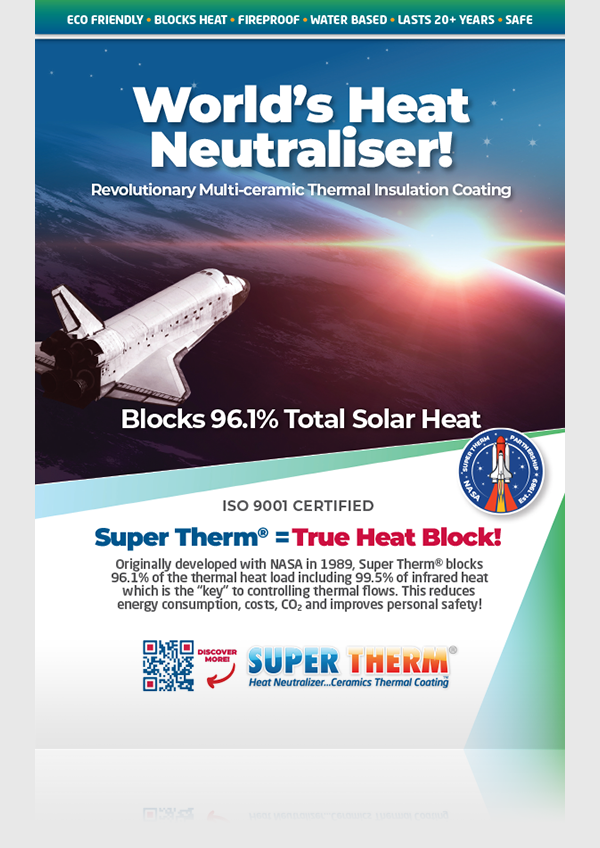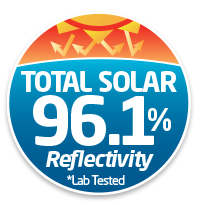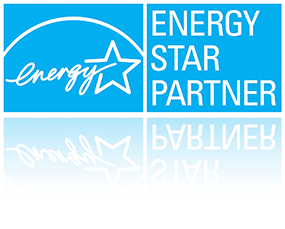Difference between Thermal Conductivity and Thermal Diffusivity and Super Therm
Thermal Conductivity: Shows how well materials conduct heat. Metals like copper and aluminum have high values, while insulation materials like foam have very low values. Increase of heat sees a lower performance in conductivity values.
Thermal Diffusivity: Shows how quickly materials respond to temperature changes. Even though metals conduct heat well, their diffusivity varies based on density and specific heat. Super Therm prevents heat load and therefore less heat penetrates the surface.
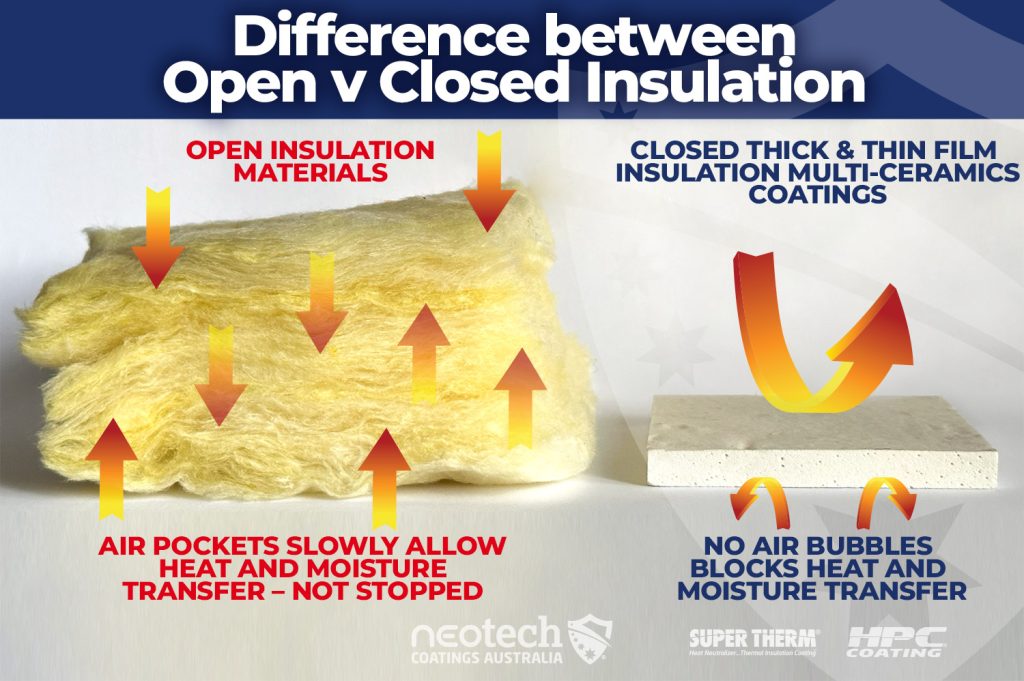
This illustrates that materials with high conductivity don’t always have high diffusivity—it depends on their density and heat capacity.
1. Thermal Conductivity (k)
- Definition: Measures how well a material conducts heat
- Unit: W/m·K (Watts per meter per Kelvin)
- Focus: The material’s ability to transfer heat energy
- Key Factors: Higher conductivity means the material transfers heat more efficiently
- Example: Metals like copper (k ≈ 400 W/m·K) have high conductivity, while insulation materials like foam (k ≈ 0.03 W/m·K) have low conductivity
2. Thermal Diffusivity (α)
- Definition: Measures how quickly a material responds to temperature changes.
- Formula:
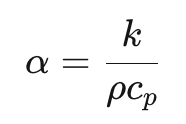
- Where:
- k = thermal conductivity (W/m·K)
- ρ = density (kg/m³)
- cₚ = specific heat capacity (J/kg·K)
- Unit: m²/s.
- Focus: The rate at which heat spreads through a material.
- Key Factors:
- High diffusivity = heats up and cools down quickly.
- Low diffusivity = retains heat longer.
- Example: Metals have high diffusivity, so they heat up and cool down quickly. Concrete has lower diffusivity, meaning it retains heat longer.
Key Difference
- Thermal conductivity (k): How well a material transfers heat
- Thermal diffusivity (α): How fast a material reacts to temperature changes
A high k material can conduct heat well, but if it has a high density and heat capacity, its α may be low, meaning it takes longer to heat up.
Super Therm – ASTM E1269 and Thermal Diffusivity test – blocked 99% of the BTU heat load from 367 down to just 4 BTU at 100°C. 0.256 mm2/s on metal plate.
Super Therm® – Stopping Heat Before It Starts
Most insulation materials absorb and conduct heat, leading to heat buildup inside. Super Therm® works differently.
🔵 Traditional insulation relies on thermal conductivity, meaning it absorbs heat and slowly releases it over time—like a hot rock in the sun.
🔴 Super Therm® stops heat at the surface by blocking thermal diffusivity, preventing heat from ever loading in the first place. No absorption, no slow release—just a consistently cooler surface.
The result? No stored heat, no wasted energy, and no reliance on air conditioning to remove trapped heat. That’s why Super Therm® delivers instant heat protection instead of just slowing heat transfer.
Block the heat before it enters, don’t just slow it down. That’s the Super Therm® difference.
For insulation coatings like Super Therm®, a low thermal diffusivity is beneficial – it slows down heat penetration, keeping surfaces cooler longer.






